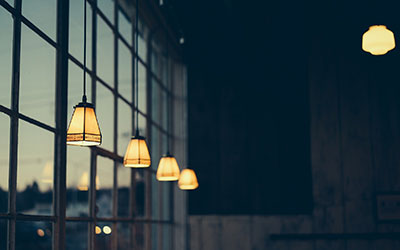
Glass windows of a home play an integral role in the structure’s form and design. Windows allow natural light to enter a home and make it easy for people within to enjoy the outside view. Their shape, size, and placement can make an aesthetic impact. But how did we get here? What’s the origin of our modern windows?
Ancient Glass Facts
According to History Of Glass, the Phoenician merchants in the Syrian region made the first glass around the year 5000 BC. However, there is archeological evidence that the first man-made glass was created in Egypt and Eastern Mesopotamia about 3500 BC. The craft of glass-making would evolve over the next several hundred years, but then take a decline before a revival in Egypt around 500 BC. The Mediterranean region would be a center for glass-making for the next several hundred years.
Early Glass Windows
Glass production thrived during the height of the Roman Empire; not just as vessels or for decorative purposes, but as elements in building structures. In other regions, like China and Japan, paper windows were common. Glass window panes in homes; however, didn’t become more widely used until the 17th century. Stained glass in churches was used much earlier, about the 13th century.
How Glass Was Made
Ancient windows often were made from animals skins stretched and treated with oils to help make them as see-through as possible. It was the Romans that discovered when manganese oxide was added, the translucency improved. The process evolved when glass-blowing developed. A “bubble” of the blown glass would be spun into a disc, reports the British Plastics Federation, and then it was slit, laid flat, and cut to form a pane. It took until almost the 18th century for the process to develop further so larger panes could be created with better clarity. However, it wasn’t until the 19th century that glass window making found its own production process, making it cheaper and easier to install panes into buildings of all types. Manufacturing techniques developed further after each World War. In the 1950s, another advancement happened in Britain. Called the float process, this technique improved glass window makers’ ability to create clear glass in very large panes. The process is similar to what is still used today.
Modern Windows
Today’s windows are technologically advanced and there are window styles to fit any home style and need. From traditional double-hung windows to bay windows that add architectural flair, they offer both beauty and functionality. You can choose windows with Low-E glass (low-emissivity) that reduce the amount of infrared and ultraviolet light that pass through into the home. There are impact-resistant glass windows and modern stained glass that adds a touch of elegance and art to the home.
All windows have one thing in common—they need to be cleaned regularly. Clean windows make difference; improved visibility, better light flow, and reduced risk for cracks. Professional window cleaners like United Window Cleaning can handle any type of window, even the upper levels and skylights. Call us today to make an appointment.


